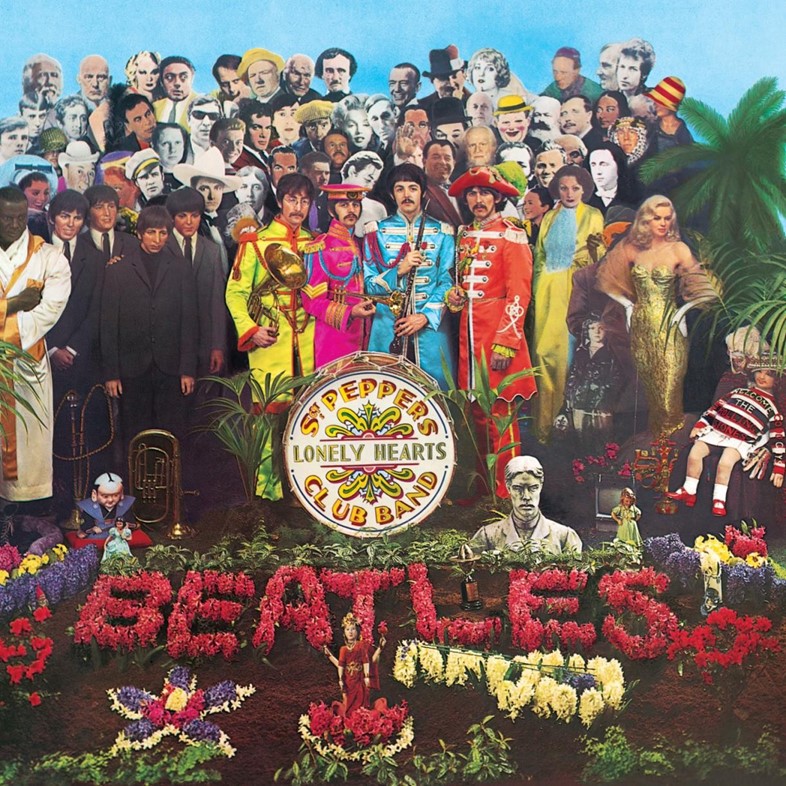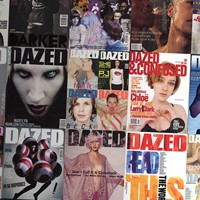As we mark the late writer’s 101st birthday this week, here’s what you need to know about the Beat Generation renegade
This week marks the 101st anniversary of William S. Burroughs’s birth. Along with Allen Ginsberg and Jack Kerouac, Burroughs founded the Beat Generation, the 1950s movement that developed new ways of writing about sex, drugs and creativity, and paved the way for the counterculture of the 1960s. Burroughs’s best-known novel, Naked Lunch (1959), follows a heroin addict as he travels round the US, Mexico, Morocco and a fictional totalitarian state; it was controversial for its graphic depictions of drug use and gay sex. Like most of Burroughs’s fiction, Naked Lunch is semi-autobiographical. To celebrate his birthday, we’ve made a list of ten things you should know about him beyond his most famous work.
HE WROTE A LOT MORE THAN NAKED LUNCH
Burroughs was a prolific writer, producing a dozen or so novels and numerous novellas, short stories, essays and letters over the course of 40 years. If you've read Naked Lunch, try The Soft Machine, the novel he published two years later. Another tale of drug use and paranoia (if you're not keen on novels about drugs and paranoia, Burroughs definitely isn't the writer for you), The Soft Machine draws from the same manuscript as Naked Lunch and developed out of Burroughs's cut-up method (see more below). If you haven't read any Burroughs at all but want to start somewhere other than Naked Lunch, go right to the beginning with his first published novel, Junkie (yup, more drugs). See Burroughs talk below about the impact of drugs on his work and on himself.
HE KILLED HIS WIFE
In 1951, Burroughs balanced a glass on the head of his wife, Joan Vollmer, declaring that he could shoot it off with a gun. He missed, hitting her temple instead; she died a short while later. 'I am forced to the appalling conclusion that I would never have become a writer but for Joan's death,' he later wrote, arguing that his subsequent wrestling with guilt and self-loathing fuelled his creativity. This makes enjoying his work an uncomfortable experience. It's one thing to accept that you're bound to read writers who held reprehensible views or did reprehensible things (your reading experience would be pretty impoverished if you didn't - no Dickens, no T.S. Eliot, no Woolf); it's a little more difficult when the writer himself believed that his works were a direct result of manslaughter.
HE DEVELOPED A NEW LITERARY TECHNIQUE
Burroughs pushed the fragmentation of his early work to new extremes with the 'cut-up', a method he hit on shortly after the publication of Naked Lunch. Developed in collaboration with artist Brion Gysin, the method involved taking the work of other writers and literally cutting it up to produce new meaning. In his biography Call Me Burroughs, Barry Miles describes Burroughs taking a page of text from a magazine, book or newspaper and cutting it into four. He would then move the four pieces around until an appealing phrase or sentence emerged from the connections between the pieces. He would type up the phrase, and the accumulation of such found phrases became its own text. Burroughs called his discovery of the cut-up a 'major revelation', and The Soft Machine and several of his other novels make wide use of the technique.
HE WAS INTO THE OCCULT
While an undergraduate at Harvard Burroughs became interested in witchcraft, and his investigations into the occult continued throughout his life. He spent hours staring at mirrors and crystals in order to experience visions and believed that soulmates could achieve perfect telepathy. He also believed in demonic possession, and that he himself was possessed by an 'Ugly Spirit' who had invaded him the moment before he killed his wife, and took root in his soul. In the 1960s he spent a few years as a Scientology enthusiast, but he never left behind his interest in the occult, and shortly before his death he was dabbling in Indian shamanism.
HE REALLY LIKED CATS
Burroughs owned numerous cats (at one point, he and Joan had 13) and kept a journal of all those that had passed through his life, which he later turned into the novella The Cat Inside. Long before the internet forced us all to confront such problems, Burroughs knew that talking about cats 'tread[s] the very thin line between the mawkish and the sublime.' Later he would explain his preference for cats over humans: 'Most people aren't cute at all, and if they are cute they very rapidly outgrow it.'

HE LIKED TO TRAVEL
The Beat movement centred on New York and San Francisco, but Burroughs lived all over the place. He was born in St. Louis, Missouri and went to school in New Mexico, to university at Harvard and, briefly, to medical school in Vienna. He moved with his wife to Mexico City; after her death he settled for several years in Tangier, where he wrote Naked Lunch and took advantage of the relaxed drug laws. Drugs prompted some of his later travels, too: he went to Colombia in search of yagé, a hallucinogenic thought to give its users telepathic powers, and spent almost a decade and a half in London, after moving there to receive treatment from a doctor who was pioneering a new method of heroin withdrawal.
NAKED LUNCH WAS A MISTAKE
Burroughs had the title Naked Lunch even before he started writing the novel. While reading aloud the manuscript of one of Burroughs's earlier works, Allen Ginsberg misread the phrase 'naked lust', and Kerouac pointed out that it would make a good title for a novel. In 1991 David Cronenberg turned the novel into a film. Check out the trailer below.
HE STRUGGLED WITH HIS SEXUALITY
Burroughs was married twice but knew he was gay by the time he hit puberty. As a teenager he kept a diary of a crush he had on one of his schoolmates; he was later so humiliated by the diary that he gave up writing altogether for several years. Looking back on his adolescence, he said that he 'just didn't know how to do it [attract other boys]... I was scared of everything, practically, and no wonder'. But while at Harvard he got involved in the gay scene in New York, and he went on to have numerous affairs with men; even so, it was not until the publication of Naked Lunch that his sexuality became common knowledge.
HE WORKED WITH A LOT OF MUSICIANS
The Beats took their name from jazz slang of the 1940s, and played a huge part in shaping the musical counterculture of the 1960s. You can see Burroughs on the cover of Sgt. Pepper, squeezed between Marilyn Monroe and the guru Sri Mahavatara Babaji. He was also more directly involved in music-making, recording and performing with artists including Frank Zappa, Laurie Anderson and Philip Glass. In the 1990s, Burroughs collaborated with Kurt Cobain and R.E.M. The result of the latter collaboration appears on the X-Files soundtrack.

HE WORKED AS A DETECTIVE
In the early 1940s Burroughs joined a private detective agency, hoping to enter the noirish world of Raymond Chandler and Dashiell Hammett. He was disappointed. The job mostly involved being hired by shops to spy on their employees and check they weren't stealing or slacking. Later Burroughs was repeatedly compared to Sherlock Holmes, on the grounds of his cocaine use, long silences and tendency to walk around with a gun.
A selection of Burroughs’s work is currently on display at London’s October Gallery alongside the work of Genesis P-Orridge, Brion Gysin, Liliane Lijn, Shezad Dawood and Cerith Wyn Evans, until 7 February. To conclude the exhibition, Burroughs’s biographer Barry Miles will be speaking at the gallery this Saturday, alongside Stewart Home and Dawood. Click here for more information




